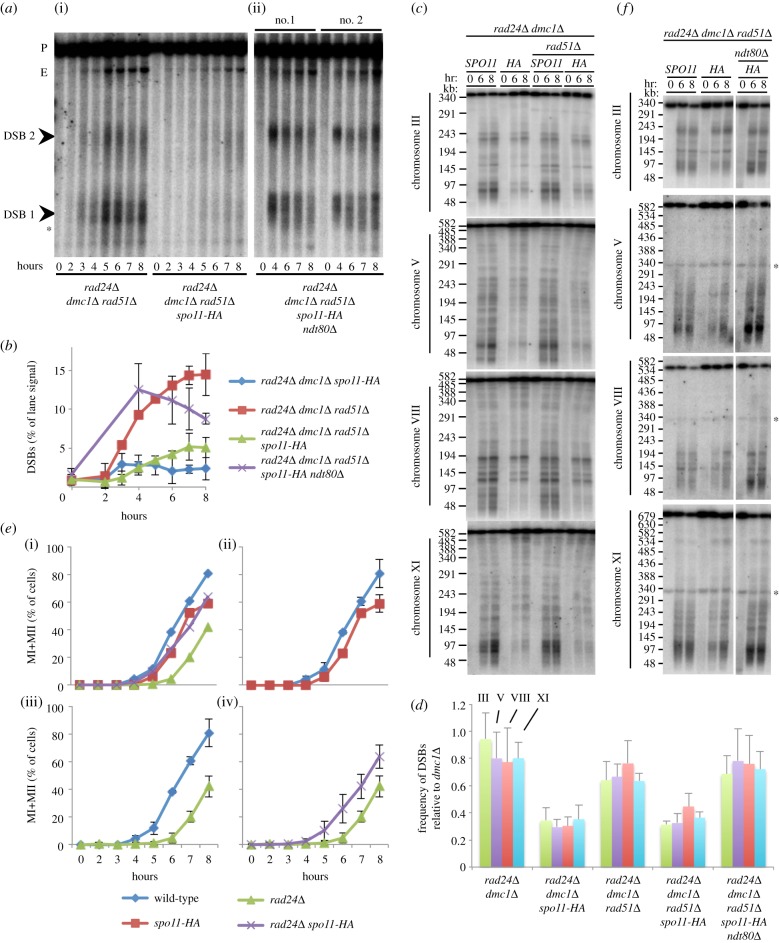Figure 6.
Ndt80-dependent meiotic progression and not inter-sister repair is responsible for the decreased DSB signal in rad24Δ spo11-HA. (a) Genomic DNA was isolated at the indicated time points from synchronous cultures of the indicated strains, digested with PstI, fractionated on a 0.7% agarose gel, transferred to nylon membrane and hybridized with the MXR2 probe. Arrowheads indicate DSB signals, asterisk marks non-specific band; P, parental band, E, ectopic band. (b) Quantification of the total DSB signal (DSB 1 + DSB 2) shown in (a) plotted as a percentage of total lane signal. rad24Δ dmc1Δ spo11-HA data from figure 2f are overlaid to aid visual comparison. (c,f) Intact chromosomal DNA was isolated at the indicated time points from synchronously sporulating meiotic cultures, separated by PFGE, transferred to a nylon membrane and sequentially hybridized using a radiolabelled fragment of a gene close to the left telomere of each chromosome (chr III = CHA1; chr V = RMD6; chr VIII = CBP2; chr XI = JEN1). Intact, full-length chromosomes migrate near the top of the gel. DSBs signals appear as the shorter, faster-migrating bands/molecules present in the 6–8 h time points. Asterisk marks residual parental signal from the chromosome III hybridization. (d) Quantification of total DSB signals in each lane expressed as a fraction of total lane signal. Measured signals were adjusted to account for the likelihood of multiple DSBs occurring on the same molecule (see material and methods). Because the absolute frequency of DSB formation varies with chromosome, calculated average frequencies (±s.d.) are plotted relative to dmc1Δ to aid easier strain-to-strain comparison. (e) Samples were stained with DAPI and the average fraction of cells having undergone the first and/or second meiotic division was plotted ±s.d. (n > 200). (i) Shown without error bars for clarity. (ii–iv) Individual comparisons.

